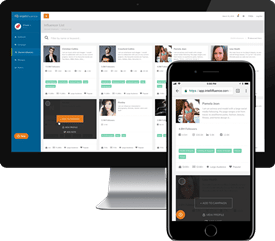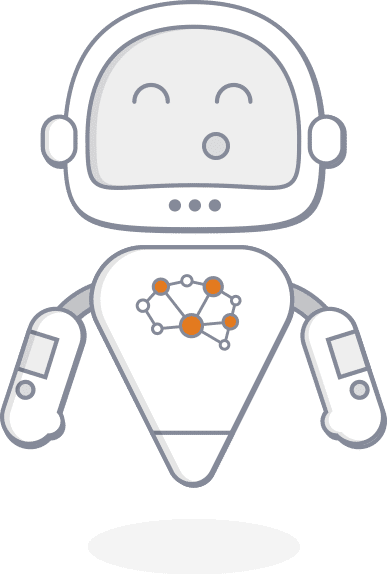Influencer marketing has become one of the most effective strategies for building brand awareness, trust, and engagement. But to make the most of influencer collaborations, brands need more than just a roster of creators—they need insights. Understanding audience conversations, preferences, and pain points allows you to create authentic partnerships that resonate. This is where social listening tools come in.
By tapping into real-time data and online discussions, you can uncover what truly matters to their target audiences and adjust their influencer marketing campaigns accordingly. In this article, we’ll explore what social listening is, how social listening works, why it’s vital for influencer marketing success, and which social listening tools software brands should consider using to stay ahead of the competition.
What Is Social Listening?
Social listening is the process of monitoring digital conversations to understand what people are saying about a brand, industry, competitors, or specific topics online. It goes beyond counting mentions or hashtags—it’s about analyzing sentiment, identifying patterns, and turning data into actionable insights.
Unlike basic social media monitoring, which focuses on tracking direct engagement (likes, comments, or shares), social listening digs deeper into the “why” behind the engagement. It captures discussions across social platforms, blogs, forums, and even news sites to help brands uncover the emotional and behavioral context of online chatter.
So, how does it work?
Social listening tools collect and process vast amounts of data from digital channels in real time. They scan for specific keywords, brand mentions, hashtags, or topics, then analyze them using artificial intelligence and natural language processing (NLP). The resulting insights can highlight audience sentiment, detect emerging trends, and even predict market shifts—all of which are invaluable for shaping influencer marketing campaigns that feel timely and authentic.
Why it is Essential for Influencer Marketing
Influencer marketing thrives on relevance and authenticity. For a campaign to resonate, the message must align with the interests, values, and language of its intended audience. Social listening tools provide the insights necessary to achieve that alignment.
Here’s how social listening enhances influencer marketing strategies:
1. Discover Emerging Trends Before They Go Mainstream
Trends move fast, especially on platforms like TikTok, Instagram, and X (formerly Twitter). By the time a topic goes viral, early adopters are already moving on to the next big thing. Social listening helps identify those trends before they peak.
For example, if a beauty brand notices growing conversations around “skin cycling” or “clean beauty,” it can quickly collaborate with influencers already engaging in that space. Instead of playing catch-up, the brand positions itself as a trendsetter, boosting both credibility and visibility.
2. Understand Customer Needs and Pain Points
Influencer marketing works best when it addresses real customer desires. Through social listening, you can uncover recurring themes in audience discussions—like frustrations with existing products, unmet needs, or shifting preferences.
If people are voicing dissatisfaction with a competitor’s service, that’s a golden opportunity for a brand to partner with influencers who can highlight how their offering solves that problem. By listening first, brands ensure their influencer content speaks directly to what the audience truly cares about.
3. Identify New Opportunities for Products and Services
Sometimes, customers will tell you exactly what they want—if you’re listening. Social listening tools can surface valuable feedback and suggestions hidden within online discussions.
For instance, a fitness equipment company might notice that users are discussing compact home gym setups. By recognizing this trend early, the brand could work with fitness influencers to test or tease a new line of space-saving workout gear, effectively co-creating demand through authentic influencer storytelling.
4. Track Brand Reputation and Manage Crises Quickly
Influencers are extensions of your brand voice. That’s why maintaining a positive reputation is essential. Social listening enables brands to detect early signs of potential issues, such as negative sentiment spikes or unfavorable mentions.
If a campaign faces backlash, the brand can respond swiftly, adjust messaging, or clarify misunderstandings before they spiral. In influencer collaborations, this is particularly important—any misalignment between influencer content and brand values can have ripple effects. Social listening tools help brands stay proactive, not reactive.
5. Monitor Competitors and Benchmark Campaigns
Knowing what competitors are doing—and how their audience responds—can inform smarter influencer partnerships. Social listening allows brands to analyze competitor campaigns, influencer collaborations, and consumer reactions in real time.
This intelligence helps brands identify market gaps and refine their own strategy. For example, if competitors’ influencer content feels overly scripted or inauthentic, a brand could capitalize by collaborating with micro-influencers who prioritize genuine storytelling.
The Connection Between Social Listening and Influencer Selection
Selecting the right influencer is one of the most critical factors in campaign success. Social listening simplifies this process by revealing which creators are already organically discussing your brand or relevant topics.
By analyzing engagement quality—not just follower counts—brands can identify influencers whose audiences align with their ideal customers. A skincare company, for example, might discover through social listening that a rising TikTok creator frequently mentions sustainable beauty products and receives strong engagement from eco-conscious followers. Partnering with that creator would likely yield higher authenticity and ROI than hiring a more generic macro-influencer.
In short, social listening transforms influencer discovery from guesswork into data-driven precision.
5 Social Listening Tools to Consider
Social listening and influencer marketing are powerful on their own—but when combined, they become a data-driven engine for growth. Using both gives you the ability to understand what audiences care about and then connect those insights to authentic storytelling through the right influencers.

Featured Influencer: Sydney Towle
Hi I’m Sydney! I guess you could call me an “influencer” on Tik Tok mainly and sometimes Instagram. I love travel, wellness, beauty, fashion, and have a strong passion for sharing my life on social media and making the world a happier place through my content.
You can begin by using social listening tools to uncover audience interests, trending topics, and sentiment shifts. From there, Intellifluence makes it easy to act on those insights by finding influencers who naturally align with those conversations. For instance, if social listening reveals that discussions about “eco-friendly packaging” are spiking, you can use Intellifluence to connect with creators who already advocate for sustainability.
Once campaigns are live, you can continue using listening tools to track how influencer content is received—measuring not just engagement but also changes in sentiment and share of voice. This feedback loop ensures every campaign is continuously refined for better authenticity and ROI.
What makes Intellifluence especially valuable is its ability to scale collaboration efficiently. Brands of all sizes—from startups to household names—can directly negotiate with verified influencers, manage campaign deliverables, and analyze results, all within one transparent platform.
By pairing social listening insights with Intellifluence’s influencer network, brands transform raw data into meaningful connections. The result is smarter campaigns that not only reach audiences but genuinely resonate with them—because when you listen first, every collaboration becomes more impactful. Here are five social listening tools you might consider to use alongside an influencer marketing platform such as Intellifluence:
1. Brand24
Brand24 is a user-friendly social listening tool that helps brands track online mentions across social media, blogs, news sites, and forums. Its sentiment analysis and keyword tracking features make it easy to understand how audiences feel about your brand, products, or campaigns. For influencer marketers, Brand24 provides context—showing which topics or pain points are resonating before you even begin outreach.
2. Awario
Awario excels at real-time monitoring, alerting brands the moment their name or relevant keywords are mentioned online. The platform scans millions of websites and social platforms, providing detailed insights into sentiment, reach, and trends. It’s an excellent tool for identifying emerging conversations and gauging audience interest around topics that your influencer partners could address in upcoming campaigns.
3. Keyhole
Keyhole offers deep insights into hashtag performance, social mentions, and keyword analytics. Its visual dashboards make it easy to track how specific themes or campaign messages perform over time. Brands can use Keyhole data to discover which hashtags or content styles generate the most engagement, allowing them to guide influencers toward strategies that align with audience behavior.
4. Mentionlytics
Mentionlytics is a comprehensive social listening and reputation management platform that monitors brand mentions across multiple languages and channels. Its AI-driven “Social Intelligence Advisor” interprets data to provide actionable insights—such as identifying sentiment shifts or recurring issues. This can help brands refine their influencer messaging and address audience concerns before they grow into larger reputation risks.
5. Talkwalker Free Social Search
While Talkwalker offers a robust enterprise suite, its free Social Search tool is an excellent option for smaller brands looking to dip their toes into social listening. It scans recent mentions and sentiment data across social networks, providing a snapshot of how audiences are engaging with your brand or industry. This real-time awareness can inspire fresh influencer content ideas rooted in what people are actually discussing.
Integrating Social Listening Into Influencer Marketing Campaigns
To get the most value out of social listening, you should integrate these insights into every stage of their influencer marketing process.
Planning: Use listening data to identify trending topics, relevant hashtags, and audience pain points. This ensures that campaign themes feel current and authentic.
Influencer Discovery: Identify creators who are already aligned with your brand’s values or who have organically engaged with similar topics.
Campaign Execution: Track audience sentiment in real time to see how people respond to influencer content, adjusting messaging if needed.
Post-Campaign Analysis: Use social listening metrics to measure the true impact of influencer collaborations—beyond vanity metrics like likes or impressions.
Social listening can also help you test new messaging strategies before launching large-scale campaigns. By monitoring small-scale influencer posts, marketers can gauge audience reactions and fine-tune creative direction based on real feedback.
The Bottom Line
In the competitive digital marketplace, success in influencer marketing depends on staying relevant, authentic, and informed. Social listening tools provide the data-driven insights that allow you to do just that.
By understanding how social listening works and investing in the best social listening tools alongside a reputable influencer marketing platform such as Intellifluence, you can:
- Discover trends early and act fast
- Build campaigns around genuine audience needs
- Collaborate with influencers who truly resonate with their market
- Protect their reputation and maintain authenticity
Ultimately, social listening transforms influencer marketing from a creative experiment into a strategic, evidence-based discipline. When brands listen first and act second, they not only amplify their campaigns—they create meaningful, lasting connections with their audiences.

SallyBot is committed to helping users get the most out of Intellifluence. By helping brands create campaigns, providing unparalleled customer service and offering useful advice, nothing makes SallyBot happier than hearing she is liked… Really, really liked.






